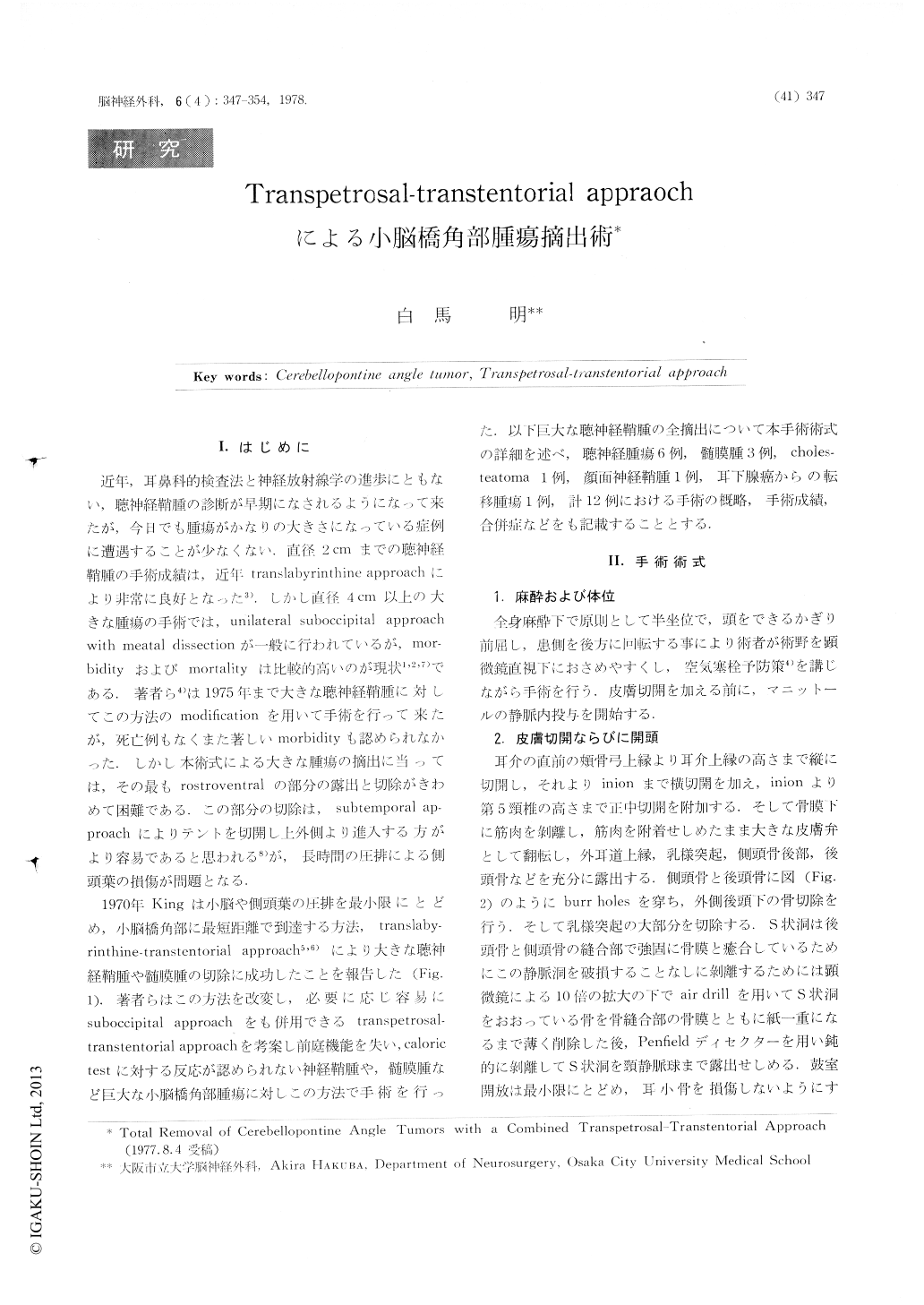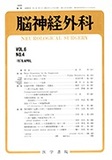Japanese
English
- 有料閲覧
- Abstract 文献概要
- 1ページ目 Look Inside
Ⅰ.はじめに
近年,耳鼻科的検査法と神経放射線学の進歩にともない,聴神経鞘腫の診断が早期になされるようになって来たが,今日でも腫瘍がかなりの大きさになっている症例に遭遇することが少なくない.直径2cmまでの聴神経鞘腫の手術成績は,近年translabyrinthine approachにより非常に良好となった3).しかし直径4cm以上の大きな腫瘍の手術では,unilateral suboccipital approach with meatal dissectionが一般に行われているが.morbidityおよびmortalityは比較的高いのが現状1,2,7)である.著者ら4)は1975年まで大きな聴神経鞘腫に対してこの方法のmodificationを用いて手術を行って来たが,死亡例もなくまた著しいmorbidityも認められなかった.しかし本術式による大きな腫瘍の摘出に当っては,その最もrostroventralの部分の露出と切除がきわめて困難である.この部分の切除は,subtemporal approachによりテントを切開し上外側より進入する方がより容易であると思われる8)が,長時間の圧排による側頭葉の損傷が問題となる.
This paper presents some experience of a simplified modification of a combined translabyrinthine-transtentorial approach to the cerebellopontine angle which was described by King5) in 1970.
Operative procedure: The patient is kent in the semisitting position with the head turned toward the side of the lesion and maximally flexed. A generous lateral scalp incision is carried down to the bone and the muscle is stripped subperiosteally so that a large scalp flap including muscle layers can be made (Fig. 2). Small retromastoideal craniectomy and mastoidectomy are performed.

Copyright © 1978, Igaku-Shoin Ltd. All rights reserved.


